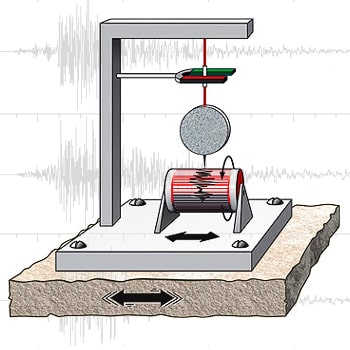{{ article.displayTitle }}
| | {{ 'ml-lesson-number-slides' | message : article.intro.bblockCount }} |
| | {{ 'ml-lesson-number-exercises' | message : article.intro.exerciseCount }} |
| | {{ 'ml-lesson-time-estimation' | message }} |
the logarithm of a with base b.Here, the base b is clearly written in the expression. There are two cases in which the base does not need to be written, which will be discussed in this lesson.
Catch-Up and Review
Here are a few recommended readings before getting started with this lesson.
Mathematical Operations



Common Logarithm
A common logarithm is a logarithm of base 10. For example, log101000 is called the common logarithm of 1000.
It is equal to 3 because 103 is 1000.

Since common logarithms are used so often, the base does not need to be written.
logm≡log10m
In the identity above, m is a positive number. Recalling the definition of a logarithm, the common logarithm of m can be defined for positive values of m.
logm=n⇔10n=m
Common logarithms can be evaluated using a calculator. For example, to evaluate log34, push LOG, enter 34, and then hit ENTER.

The common logarithm of 34 is about 1.53.
Evaluating Common Logarithms
Use a calculator to evaluate the common logarithms. Round the answer to two decimal places.

Earthquakes and Logarithms

Hint
Substitute 7.9 and 7.1 for M1 and M2, respectively, in the given formula. Then, use the definition of a common logarithm.
Solution
M1=7.9, M2=7.1
Subtract term
Using the Properties of Common Logarithms
After studying the relationship between earthquakes and logarithms, Vincenzo became more interested in this fascinating math topic.
Now he wants to pair the logarithmic expressions that involve common logarithms with their corresponding simplified expression or number. Help him do this!Hint
Use the properties of logarithms and the definition of a common logarithm.
Solution
First, simplify the expressions on the left. They can then be paired with their corresponding expressions on the right.
Expression 1
To simplify this expression, the Quotient Property of Logarithms and the definition of a common logarithm will be used.log(m)−log(n)=log(nm)
Cancel out common factors
Simplify quotient
log(10)=1
Expression 2
To simplify this expression, the Power Property of Logarithms, the Product Property of Logarithms, and the definition of a common logarithm will be used.m⋅log(a)=log(am)
log(mn)=log(m)+log(n)
log(10)=1
Commutative Property of Addition
log(m)+log(n)=log(mn)
a⋅am=a1+m
Expression 3
To simplify the third expression, the Product Property of Logarithms, the Quotient Property of Logarithms, a logarithm identity, and the definition of a common logarithm will be used.log(mn)=log(m)+log(n)
a=1010⋅a
Multiply
log(nm)=log(m)−log(n)
log(1)=0
log(10)=1
Subtract term
Commutative Property of Addition
Expression 4
To simplify the second to last expression, the Quotient Property of Logarithms, the Power Property of Logarithms, and the definition of a common logarithm will be used.log(nm)=log(m)−log(n)
Write as a power
log(am)=m⋅log(a)
log(10)=1
Identity Property of Multiplication
Add terms
Expression 5
Finally, to simplify the last expression, the Product Property of Logarithms and the Power Property of Logarithms will be used.log(m)+log(n)=log(mn)
a⋅am=a1+m
m⋅log(a)=log(am)
Subtract term
Calculating the Value of an Expression for Bigger Values of n

The Natural Base


The Number e
The number e — commonly called the natural base — is an irrational mathematical constant named by the mathematician Leonhard Euler.
e=2.7182818284…
The Natural Logarithm
A natural logarithm is a logarithm with base e.
Although it is correct to write loge,
the natural logarithm is more commonly written as ln.
lnm=logem
This means that lnm equals the exponent to which e must be raised to equal m.
lnm=n⇔m=en
Natural logarithms can be evaluated using a calculator. For example, to evaluate ln21, push LN, input 21, and then hit ENTER.

Evaluating Natural Logarithms
Use a calculator to evaluate the natural logarithms. Round the answer to two decimal places.

Using the Properties of Natural Logarithms

Hint
Simplify all the expressions using the properties of logarithms.
Solution
Simplify the expressions so that the expression that is not equivalent with the others can be easily identified.
Expression 1
To simplify this expression, the Product Property of Logarithms, the Quotient Property of Logarithms, and the Power Property of Logarithms will be used.ln(ab)=b⋅ln(a)
ln(ba)=ln(a)−ln(b)
Subtract term
ln(a)+ln(b)=ln(ab)
ln(a)+ln(b)=ln(ab)
Expression 2
To simplify the second expression, the Product Property of Logarithms, the Power Property of Logarithms, and the definition of a natural logarithm will be used.ln(ab)=ln(a)+ln(b)
ln(e)=1
ln(ab)=b⋅ln(a)
Distribute -1
Subtract terms
ln(a)+ln(b)=ln(ab)
ln(a)+ln(b)=ln(ab)
Expression 3
To simplify the third expression, the Quotient Property of Logarithms and the definition of a natural logarithm will be used.ln(ba)=ln(a)−ln(b)
ln(e)=1
Distribute -1
Add terms
Expression 4
To simplify the second to last expression, the Product Property of Logarithms and the Quotient Property of Logarithms will be used.ln(a)+ln(b)=ln(ab)
ln(a)−ln(b)=ln(ba)
Cancel out common factors
Simplify quotient
Expression 5
The last expression will be simplified by using the Power Property of Logarithms and the Product Property of Logarithms.a=a21
ln(ab)=b⋅ln(a)
2⋅2a=a
Identity Property of Multiplication
Subtract term
ln(a)+ln(b)=ln(ab)
Change of Base Formula
Most calculators only calculate common and natural logarithms. These are logarithms with base 10 or e. Luckily, there is a formula that allows any logarithm to be written in terms of common or natural logarithms.
Change of Base Formula
A logarithm of arbitrary base can be rewritten as the quotient of two logarithms with the same base by using the change of base formula.
logca=logbclogba
This rule is valid for positive values of a,b, and c, where b and c are different than 1.
Proof
a=cx
logb(am)=m⋅logb(a)
x=logca
LHS/logbc=RHS/logbc
Rearrange equation
Note that this formula is helpful to calculate any logarithm using a calculator, since the new base can be any positive number different than 1. This means that the new base can be 10 or e.
Using the Change of Base Formula

Hint
Solution

Therefore, the value of log423 rounded to the nearest hundredth is 2.26.

Therefore, the value of log756 rounded to the nearest hundredth is 2.07.
Leonhard Euler and His Contributions
In this lesson, the Swiss mathematician Leonhard Euler was mentioned. Euler was also a physicist, astronomer, geographer, logician, and engineer. During his life, Euler came up with principles that set the foundations for most of the mathematics used nowadays. He was a revolutionary thinker in the fields of geometry, calculus, trigonometry, differential equations, and number theory.
Among other important contributions, he introduced most of the mathematical notations that are used today. Euler was the first person to use the letter e to denote the base of a natural logarithm. Furthermore, although he was not the first to use it, Euler popularized the use of the Greek letter π to indicate the ratio of the circumference of a circle to its diameter.


